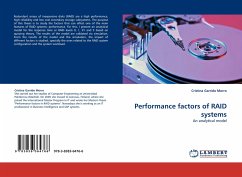
Performance Improvement Of The 2D Broadcast-based DSM Systems
By Message Operations
Versandkostenfrei!
Versandfertig in 6-10 Tagen
41,99 €
inkl. MwSt.

PAYBACK Punkte
21 °P sammeln!
A DSM system on 2D broadcast-based optical architecture is simulated by using OPNET Modeler and the performance of the system is improved by message priority and combining techniques under different traffic patterns, including uniform, hot region and bit permutations. The simulated system contains 64 nodes. Each node has a server that processes directory, cache and processor messages, two output channels and two input queues, one for horizontal and the other for vertical dimension. Scenarios are run to measure average network response time, average input waiting time and average channel waitin...
A DSM system on 2D broadcast-based optical architecture is simulated by using OPNET Modeler and the performance of the system is improved by message priority and combining techniques under different traffic patterns, including uniform, hot region and bit permutations. The simulated system contains 64 nodes. Each node has a server that processes directory, cache and processor messages, two output channels and two input queues, one for horizontal and the other for vertical dimension. Scenarios are run to measure average network response time, average input waiting time and average channel waiting time for varying values of DSM parameters. The results show that combining reduces average channel waiting time between 13% and 29%, while priority reduces average input waiting time between 7% and 43% on average. With the application of message priority and combining, between 7% and 40% performance increase for average network response time has gained.












